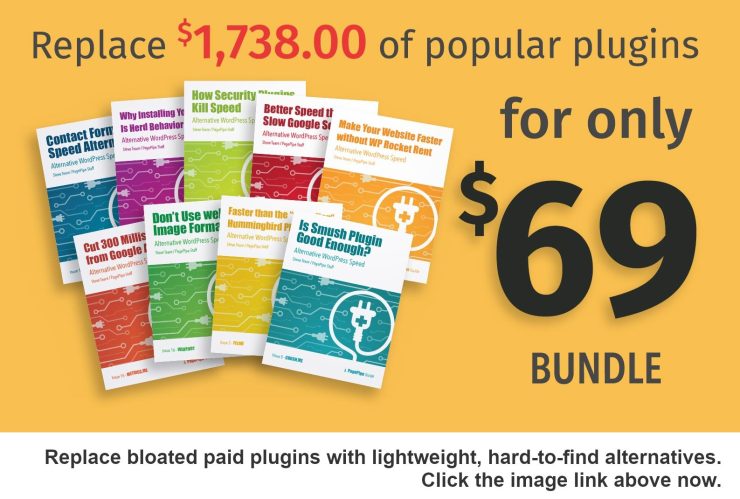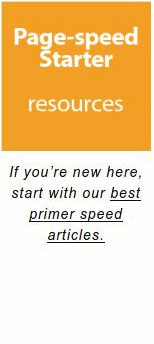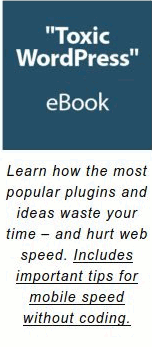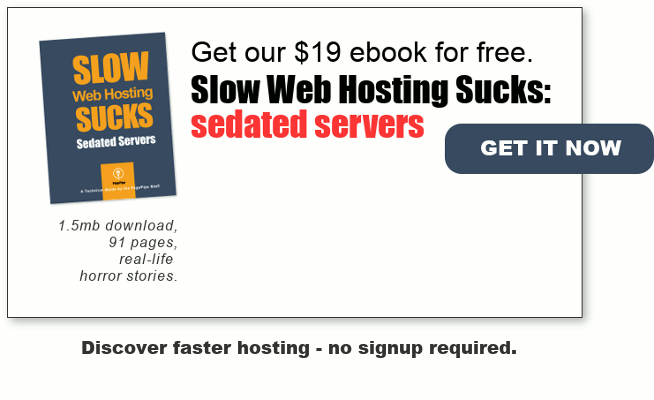Speed affects Search Engine Optimization (SEO) indirectly. That’s right. Not DIRECTLY – indirectly!
Speed is a component of User Experience (UX). Visitor’s check speed at a subconscious level. And even a conscious level for delayed page loads. Visitors judge site quality and web hospitality before assessing written content or images.
Site visitors hate slow loading pages. It’s frustrating and annoying waiting to see page content. Slow loading pages delay critical decision making. If a page is too slow, visitors leave. This abandonment reveals human intolerance and impatience. They want to have quick answers: “Is this the right place for me or not?”
Good user experience enhances source credibility. Credibility is trustworthiness, expertise, and enthusiasm. Speed cues us how much a site owner cares about our experience. It’s website body language.
Credibility is the intangible effect Google is evaluating. They examine 200 plus signals that generate their page ranking algorithm. Speed is one of those signals. How much does it “weigh” in the formula? Less than 1 percent. Focus on content quality. It’s the primary and biggest SEO signal. Content must be relevant and engaging.
User experience and credibility are intangible feelings.
Google determines relevancy and engagement based on measurable parameters. This is also called visitor intent. It’s not traffic volume (unique visitor counts). It’s affected by bounce rate, return visits, and dwell time.
Speed affects many metrics – including bounce rate.
Does data like bounce rate not make sense to you?
Bounce rate is the number of people who knock on your door and then leave before doing anything on your website. For example, perhaps 89 percent of your people leave immediately. They hit and “bounce” off the site. One look and they’re gone. Use the knowledge to improve. You will improve your site by measuring.
We’ve seen many different bounce rates. For example:
On a French life-style site, traffic is 100,000 visitors per month. 95 percent of those visitors bounce. They immediately click the browser back button or starting a new search.
In the French case study, 5,000 visitors had “intent” or “engaged” with the site. That is indicated with click-thru or long dwell time. Dwell time is how long they stay on a page consuming (viewing or reading) content. Click-thru is exploring further into the site.
On a medical site, there were 15,000 visitors per month and 85 percent bounce rate. This means 2,250 visitors engaged.
On our speed site, PagePipe, we have 30,000 visitors per month with a 18 percent bounce rate. This indicates 24,600 engaged.
So which site achieves the most successful engagement? We’d assume the French site with the most traffic is best. Is bigger better?
Let’s compare the real engagement results:
[table]
site,visitors,bounce rate,leave,stay
lifestyle,100000,95,95000,5000
medical,15000,85,12750,2250
speed,30000,18,5400,24600
[/table]
Let’s say all these sites are pretty equal in engagement. We could further quantify engagement quality by inspecting dwell time. How long did they stay?
Now “dwell time” is hypothetical, because people sometimes leave browser pages open all day long as they wander around the web.
In the beginning, where did all these blogs start at? Zero visitors. Often for months. It took time to determine what they were offering and how to make money. And build credibility.
There is no site credibility for first-time visitors. They’re suspicious and anxious. They assume all sites will attempt ripping them off. Speed helps overcome that distrust. Speed’s a reassuring feature.
Now, one NY site we evaluated had 1 million visitors per month. The bounce rate was 20 percent. That meant 800,000 people engaged every month. Wow! A gold standard. The site was about tech gadgetry for women. Female geeks. This is the most successful site we’ve investigated thus far.
The site owner is now a self-made millionaire. But her site became slow and clunky. The mobile experience wasn’t good and most of her visitors were on mobile devices. Her visitors tolerate that so far because they value her content. But her competitors are delivering similar content with better user experience. Speed is fundamental UX. That keeps her awake at night.
We couldn’t help her with site origin optimization. The site speed was swamped by the negative effect of ads. Advertising scripts from third parties were big culprits slowing down her site. We had no way to remove those without affecting her income. Speed was in the hands of third-party sources. Ads and affiliate links were her main revenue source. Sadness.
The quality of PagePipe’s visitors gets better and better. We don’t want more visitors. We want better ones. Quality not quantity. Will we ever have 1 million visitors per month? No. We’re OK with that. It’s not our goal. Interacting with people who want to improve is good enough.
Credibility translates into SEO ranking.
All three sites mentioned (but not NY) have about the same quantity of qualified visitors. How long they stay (dwell time) also indicates the quality of content. Again, when you engaged them, it indicates their investment of time in your offering.
How many monthly visitors you get is insignificant to efficiency. How many buy something is the metric that counts most. One visitor buying thousands of dollars of profitable services or products is worth as much as 5,000 who spend 50 cents. This is niche market thinking. It works for us.
One million visitors can produce no money. People must show interest in your offer.
The goal is helping a few people – or even one. Today perhaps you’re our one. We offer you a free education. This street knowledge cost us with learning-curve pain.
Bounce rate helps determine the quality of leads you get on your site. The lower the percentage, the better visitors are understanding you have what they’re looking for. It means you passed their mind filter. They understand what you do and why. They value it. “Staying” is their vote.
I’m glad to see traffic picking up. But out of all the people visiting my site over the last few days, I had one new subscriber.
Who cares? We get about a few subscriber per week. We collect subscribers to build a list. Our list is small – around 1,000 names.
On some sites, a signup is the most dominant site element. On PagePipe, selling ebooks is our emphasis – not list building. A list is cool – but it’s not top priority. What are you sending your list? If you never use it, is it valuable? Only if you start an email campaign. Then it may be an opportunity. Or an opportunity cost.
Is there a way to see visitor’s URL addresses from metrics and start marketing to them?
No. They belong to Google at best. But they don’t compile a list. List building is done with onsite email signups. You can own that.
The single best thing to enhance your SEO is write relevant content for your target audience. Make it your goal to get up over 50 posts. But it can’t be thin content. It has to be engaging and interesting. People won’t read or watch non-entertaining drivel. Solve problems. Save them from themselves and their foolish behaviors. Give away your knowledge. Then they’ll trust you.
PagePipe gives you free knowledge.
You can put too much energy into improving UX and speed. Then it’s an inefficient waste or obsession. It may not move the SEO needle even after two years of analysis. It may mean there’s deterioration or erosion of traffic to competitors. Sometimes keeping what engagement you’ve earned is good enough.
Metrics may reveal 70 to 80 percent of traffic is on mobile devices. Then future-proof with mobile-friendly changes.
We don’t regurgitate herd myths about speed. We want you to find the truth.
Godspeed-
![]()
Steve Teare
performance engineer
April 2025
PagePipe Site Tuning Services for Speed
Instead of band-aid approaches, we drill down to the root cause of your slow site. This is origin optimization. Also known as site tuning. To do this, we analyze site components:
- Hosting
- Theme
- Plugins
- Scripts and third-party services.
- Images and media library.
- We minimize globally loading plugin effects.
Find out more details about Site Tuning – Get Speed!






